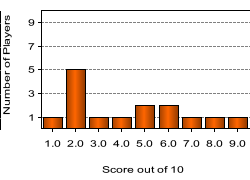Quiz Answer Key and Fun Facts
1. Upon what autobiographical event is Narayan's 'The English Teacher' based?
2. What is the name of Narayan's first novel?
3. 'The Dark Room' (1938), was the first of Narayan's novels that I read, and remains my favourite. What is the story about?
4. Which of the following books by R.K. Narayan is NOT a collection of short stories?
5. Which of Narayan's books was the top-seller of Narayan's novels, has garnered the most critical praise, was made into an American film with the collaboration of Pearl S. Buck, and into a Hindi film that won seven 'Filmfare' awards [the Indian equivalent of the Academy Award]?
6. Which book features the character Daisy, who is on a fanatical mission to control India's population?
7. In 'Waiting for the Mahatma', what happens at the end of the book?
8. In 'The Man-Eater of Malgudi', what kind of creature is the man-eater?
9. The fictional town of Malgudi is the setting for most of Narayan's novels. However, Malgudi is intended to be a fictionalization of Narayan's lifelong home, which was:
10. What are the main themes of Narayan's fiction?
Source: Author
alliefarrell
This quiz was reviewed by FunTrivia editor
agony before going online.
Any errors found in FunTrivia content are routinely corrected through our feedback system.

